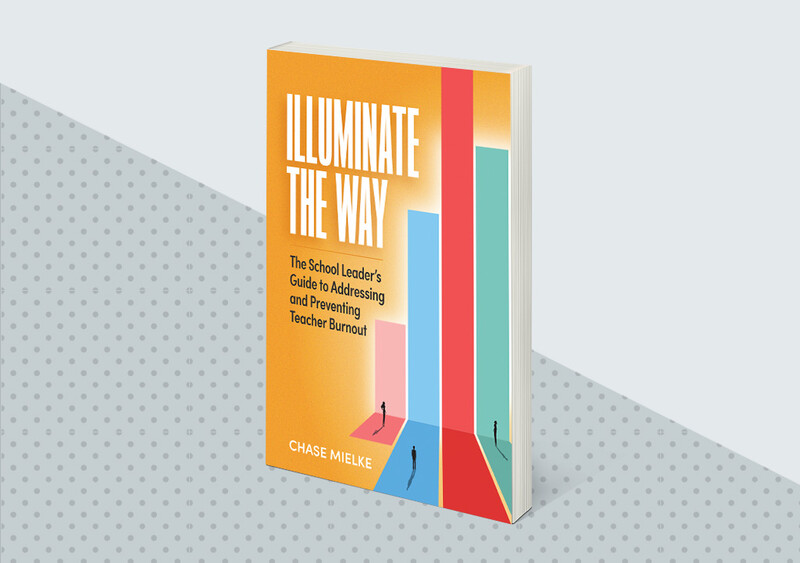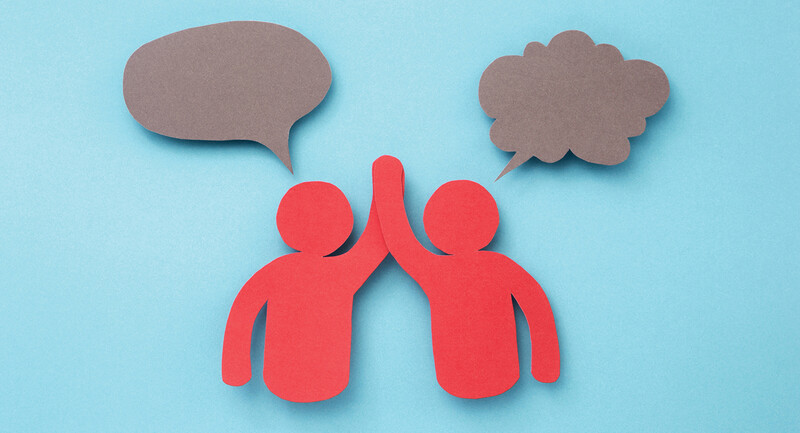In 2023, photographer Boris Eldagsen won the Sony World Photography award for creativity. But Eldagsen turned down the award—one of the most prestigious in photography. Why? Because the photo, a black-and-white image of two women, was a ruse. Boris created it using artificial intelligence as a statement to see if the world’s leading experts in photography could distinguish human creation from artificial creation. They couldn’t.
Raise your hand if you both applaud in awe and vomit in fear of what AI could do to our world. Many of the instructional practices we’ve held dear—and taught with fervor—now seem ready to implode as the robots take over. Tool around with ChatGPT for even a few minutes and you’ll find how eerily skillful it can be in replicating human writing, speech, and synthesis.
AI isn’t going anywhere (though it will soon be everywhere). So many educators, rightfully, are investing their energy into understanding and using it. While I am a proponent of “infuse it, don’t refuse it,” I believe we should also be making a far more powerful investment in our schools: an investment in human connection.
Artificial intelligence can pantomime human conversation and creativity. But it will never replicate authentic interaction.
Artificial intelligence can pantomime human conversation and creativity. But it will never replicate authentic interaction. What if, instead of debating the malice and merits of AI, we spent our energy in schools cultivating the social connections AI will never replace?
Surrounded in Isolation
Consider how even our basic daily tasks are often devoid of human interaction. Want to know if a restaurant is open? Why call when you can Google it? Is their food any good? Don’t ask a friend—read online reviews. Cast aside cashiers and plug a delivery order into an app, letting a driver (or drone?) drop off your meal at your door without a greeting. Eat beside your loved ones as you stare at a TV or phone screen. I wish this were hyperbole, but no doubt you’ve done it countless times (as I have).
These small societal shifts toward non-human interaction are coming at a cost: Over the past two decades, social isolation has increased and companionship and social engagement have decreased across all roles (friends, family, neighbors). While the pandemic exacerbated some of this, social connectedness was declining long before 2020 (Kannan & Veazie, 2023).
Feeling socially connected strengthens our immune system, boosts our lifespan, and reduces anxiety and depression. It’s especially important for introverts: controlled studies find that introverts actually get bigger boosts of happiness than extroverts when they actively seek social connection (Hall et al., 2023). On the education front, students who feel a sense of belonging at school have greater academic performance, higher attendance, better mental health, and stay in school longer (CDC, n.d.). For the sake of our individual and organizational health, then, social connection should be a focal point. Thankfully, the steps we can take to increase social connectedness require little effort (and even less technology).
For the sake of our individual and organizational health, social connection should be a focal point.
We can start by making the choice to approach rather than avoid the humans in our lives.
One Talk, Two Talk, Small Talk, Deep Talk
The key to planting the seeds of social connection is remembering it’s mostly a matter of intention on our part. One study found that just making an effort to converse with others is positively correlated with well-being (Sun, Harris, & Vazire, 2020). Even a few additional interactions throughout your day can help.
There is value, too, in seeking deeper connection. A 2010 study found that the happiest individuals have one-third less frequency of trivial small talk and twice the frequency of deep conversation compared to the least happy individuals (Mehl et al., 2010). And it’s more than just correlation: When individuals make an effort to reach out to friends, they boost well-being compared to those who don’t seek connection—no matter how they reach out (Hall et al., 2023).
So, as educators (and good people), we should make it a priority this year to foster more human connection, matching the growth of artificial intelligence with authentic interaction. Here are three simple ways to do that:
1. Connect with a friend.
When Hall and his colleagues (2023) studied social connection, participants could choose from several ways to connect with a friend:
The type of connection didn’t make a difference, but every effort boosted well-being and reduced participants’ anxiety, stress, and loneliness. So, keep sending those funny memes, but also consider mixing it up by calling a friend to catch up the next time you’re commuting or cleaning.
2. Schedule it.
Don’t treat social connection as a “nice to have”—make it a scheduled part of your day. As a teacher, I implemented a weekly routine of activities that increased social connectedness, such as:
By making social connection a critical part of our instruction, we not only create authentic connections in class, we also help students develop skills to form authentic connections in their future.
3. Go deeper.
Occasionally, we need to spark deeper conversations to really get to know people. Ask a colleague what they’re most looking forward to this year. Ask a parent what their biggest challenges and triumphs have been with raising children so far. Have your students respond to the writing prompt, “To understand me better, you should know. . . .” Or borrow this list of questions I’ve collected and used to kick off staff meetings, help students get to know each other, or keep in a jar in the staff lounge for teachers to pull at random during lunch. Artificial intelligence might be the new 'brains' of school systems. But authentic interactions will always be the heart.
AI is changing our world. But there will never be artificial joy. Nor artificial compassion. No chatbot will replace the laughter lingering in a classroom or the smile from a stranger. Artificial intelligence might be the new “brains” of school systems. But authentic interactions will always be the heart.
Illuminate the Way
A guide for school leaders to address and prevent teacher burnout.










